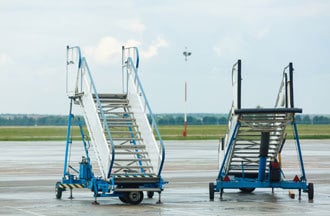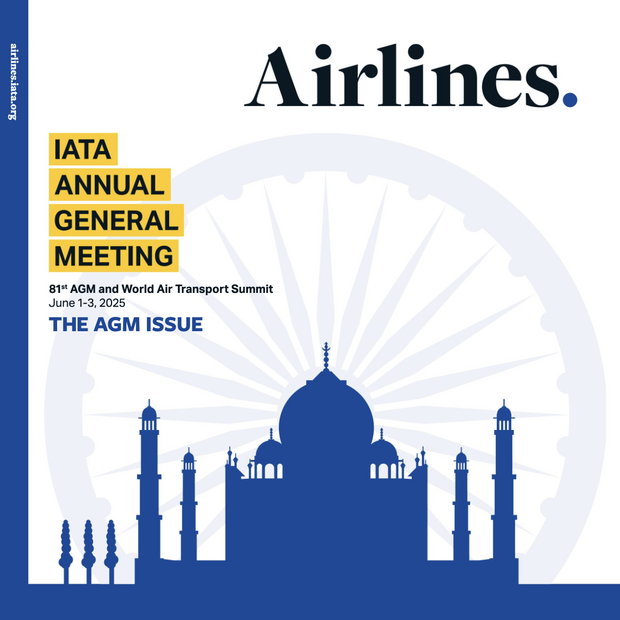
Translations:
Mejoras marginales en demanda de viajes de mayo (pdf)
Modeste amélioration du trafic aérien en mai (pdf)
国际航协:5月份全球航空客运需求略改善 (pdf)
Demanda de passageiros apresenta melhora pouco significativa em maio (pdf)
Geneva - The International Air Transport Association (IATA) announced that both international and domestic travel demand showed marginal improvements in May 2021, compared to the prior month, but traffic remained well below pre-pandemic levels. Recovery in international traffic in particular continued to be stymied by extensive government travel restrictions.
Because comparisons between 2021 and 2020 monthly results are distorted by the extraordinary impact of COVID-19, unless otherwise noted all comparisons are to May 2019, which followed a normal demand pattern.
- Total demand for air travel in May 2021 (measured in revenue passenger kilometers or RPKs) was down 62.7% compared to May 2019. That was a gain over the 65.2% decline recorded in April 2021 versus April 2019.
- International passenger demand in May was 85.1% below May 2019, a small step-up from the 87.2% decline recorded in April 2021 versus two years ago. All regions with the exception of Asia-Pacific contributed to this modest improvement.
- Total domestic demand was down 23.9% versus pre-crisis levels (May 2019), slightly improved over April 2021, when domestic traffic was down 25.5% versus the 2019 period. China and Russia traffic continue to be in in positive growth territory compared to pre-COVID-19 levels, while India and Japan saw significant deterioration amid new variants and outbreaks.
“We are starting to see positive developments, with some international markets opening to vaccinated travelers. The Northern Hemisphere summer travel season is now fully arrived. And it is disappointing that more governments are not moving more rapidly to use data to drive border opening strategies that would help revive tourism jobs and reunite families,” said Willie Walsh, IATA’s Director General.
Air passenger market detail - May 2021
| may 2021 (% vs may 2019) |
world share1 | rpk | ask | PLF (%-PT)2 | PLF (LEVEL)3 |
|---|---|---|---|---|---|
| Total Market | 100.0% | -62.7% | -53.7% | -15.9% | 65.8% |
| Africa | 1.9% | -69.4% | -60.9% | -14.8% | 53.0% |
| Asia Pacific | 38.6% | -59.5% | -52.0% | -12.6% | 67.8% |
| Europe | 23.7% | -77.9% | -68.8% | -24.4% | 59.3% |
| Latin America | 5.7% | -57.4% | -53.8% | -6.5% | 76.8% |
| Middle East | 7.4% | -79.6% | -61.6% | -34.1% | 38.9% |
| North America | 22.7% | -44.0% | -33.8% | -13.3% | 72.8% |
1) % of industry RPKs in 2020 2) Change in load factor vs. the same month in 2019 3) Load Factor Level
International Passenger Markets
European carriers’ May international traffic declined 84.7% versus May 2019, improved from the 87.7% decrease in April compared to the same month in 2019. Capacity dropped 75.7% and load factor fell 31.3 percentage points to 52.9%.
Asia-Pacific airlines saw their May international traffic fall 94.3% compared to May 2019, fractionally worse than the 94.2% drop registered in April 2021 versus April 2019. The region experienced the steepest traffic declines for a tenth consecutive month. Capacity was down 86.4% and the load factor sank 45.5 percentage points to 33.2%, the lowest among regions.
Middle Eastern airlines experienced an 81.3% demand drop in May compared to May 2019, slightly bettering the 82.9% decrease in April, versus the same month in 2019. Capacity declined 63.7%, and load factor fell 35.3 percentage points to 37.7%.
North American carriers’ May demand fell 74.4% compared to the 2019 period, an improvement over the 77.6% decline in April versus two years ago. Capacity sagged 58.5%, and load factor dropped 32.2 percentage points to 51.7%.
Latin American airlines saw a 75.1% demand drop in May, compared to the same month in 2019, notably improved over the 80.9% decline in April compared to April 2019. May capacity was down 69.9% and load factor decreased 14.6 percentage points to 69.5%, which was the highest load factor among the regions for the eighth consecutive month.
African airlines’ traffic fell 71.4% in May versus May two years ago, a gain from the 75.6% decline in April compared to April 2019. May capacity declined 61.8% versus May 2019, and load factor dropped 16.9 percentage points to 50.2%.
Domestic Passenger Markets
| May 2021 (%vs may2019) |
world share1 | rpk | ask | PLF (%-PT)2 | PLF (LEVEL)3 |
|---|---|---|---|---|---|
| Domestic | 54.3% | -23.9% | -15.7% | -8.1% | 75.9% |
| Dom. Australia | 0.7% | -30.6% | -22.8% | -7.7% | 68.4% |
| Dom. Brazil | 1.6% | -44.0% | -44.2% | -0.4% | 82.1% |
| Dom. China P.R. | 19.9% | 6.3% | 12.7% | -4.7% | 79.3% |
| Dom India | 2.1% | -71.0% | -50.1% | -37.7% | 52.3% |
| Dom. Japan | 1.5% | -68.5% | -44.0% | -32.0% | 41.1% |
| Dom. Russian Fed. | 3.4% | 22.6% | 28.2% | -3.5% | 76.4% |
| Dom. US | 16.6% | -26.2% | -18.3% | -8.4% | 79.1% |
1) % of industry RPKs in 2020 2) Change in load factor vs. the same month in 2019 3) Load Factor Level
India’s domestic traffic fell 71.0% in May compared to May 2019 amid the emergence of the new and more contagious “Delta” variant. This compared to a 42% decline registered in April versus the same month two years ago.
Brazil’s domestic traffic rebounded from a 60.9% decline in April versus the same month in 2019, to a 44% decline in May, as travel restrictions were eased.
The Bottom Line
“To paraphrase an old saying, when you think that all you have is a hammer, every problem looks like a nail. Too many governments continue to act as if the only tool in their anti-COVID-19 arsenal is a blanket border closure or an arrival quarantine. In fact, research from leading medical organizations around the globe confirms that vaccinated travelers pose very little risk to the local population[i] while data show that pre-departure testing largely removes the risk of unvaccinated travelers importing COVID-19[ii].
“It is long past time for governments to start responding to this information with more nuanced data-driven risk-based strategies. These will minimize the chance of importing COVID-19 while allowing the world to reopen to travel and all the opportunities it brings to reconnect with loved ones, to realize business opportunities, to explore the world or take a well-deserved vacation,” said Walsh.
View the full May Air Passenger Market Analysis (pdf) - including 2021 vs. 2020 comparison
View IATA's Senior Economist presentation (pdf)
For more information, please contact:
Corporate Communications
Tel: +41 22 770 2967
Email: corpcomms@iata.org
Notes for Editors:
- IATA (International Air Transport Association) represents some 290 airlines comprising 82% of global air traffic.
- You can follow us at https://twitter.com/iata for announcements, policy positions, and other useful industry information.
- Statistics compiled by IATA Economics using direct airline reporting complemented by estimates, including the use of FlightRadar24 data provided under license.
- All figures are provisional and represent total reporting at time of publication plus estimates for missing data. Historic figures are subject to revision.
- Domestic RPKs accounted for about 54.3% of the total market.
- Explanation of measurement terms:
- RPK: Revenue Passenger Kilometers measures actual passenger traffic
- ASK: Available Seat Kilometers measures available passenger capacity
- PLF: Passenger Load Factor is % of ASKs used. - IATA statistics cover international and domestic scheduled air traffic for IATA member and non-member airlines.
- In 2020, total passenger traffic market shares by region of carriers in terms of RPK were: Asia-Pacific 38.6%, Europe 23.7%, North America 22.7%, Middle East 7.4%, Latin America 5.7%, and Africa 1.9%.
[i] Including US Centers for Disease Control and Prevention, the European Centre for Disease Control and Prevention and the Robert Koch Institute
[ii] According to data from the UK, about 98% of arriving passengers detained by universal quarantine orders left confinement with no signs of the disease.

